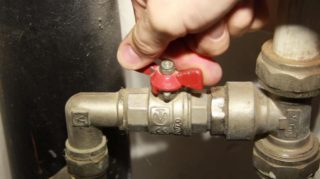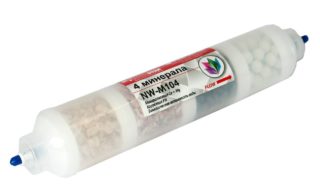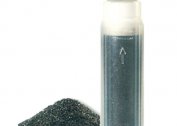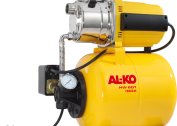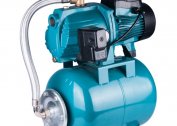Mineralizer for reverse osmosis - behind this complex term lies a completely simple design designed to purify water. But purification is not the same as when using carbon or another type of filter. Among users, feedback on reverse osmosis filters with a mineralizer is extremely ambiguous, and therefore the topic requires detailed study.
Is a device needed in a water purification system
 The reverse osmosis filter removes up to 99% of all contaminants, as well as salt molecules, from water. Only oxygen and gas remain in the liquid, they do not harm a person. However, such purification increases the acidity of the resulting liquid.
The reverse osmosis filter removes up to 99% of all contaminants, as well as salt molecules, from water. Only oxygen and gas remain in the liquid, they do not harm a person. However, such purification increases the acidity of the resulting liquid.
Most reverse osmosis mineralizers include calcite obtained from natural calcium carbonate. This product saturates a liquid with a vital mineral. Some cleaners also include additional pH adjusting agents. Magnesium in the composition of the mineralizer neutralizes the increased acid, and also improves the taste of water.
A mineralizer with a carbon filter element is usually used as the last degree of purification. Some models involve the use of 2 taps with water - the usual purified one flows from one, the osmosis treated from the other. This is necessary because the continuous use of fully purified water is not recommended by WHO.
The water purified using the osmosis system is used for various purposes: cooking, eating in pure form, washing dishes, body, and washing. However, this liquid should not be used for washing cars; not all manufacturers recommend using it in household appliances, although some users note a decrease in the amount of scale after applying such a liquid.
The best solution for installation in a house or apartment is a system with 2 taps, which makes it possible to drink plain water, and cook on mineralized water. Or use the other way around.
Advantages and disadvantages of the system
The reverse osmosis water purification system is the most effective, it removes up to 99% of bacteria, as well as chemical and other impurities. This is a major advantage, but there are a few more:
- water tastes better;
- it becomes softer;
- it is possible to use mineralizers that improve the molecular composition.
However, the complete purification of the liquid from impurities can lead to the removal of vital substances, such as calcium and other salts, from it. This leads to the gradual development of diseases: arthritis, arthrosis, problems with teeth, gums, heart.
Another drawback of osmosis without a mineralizer is an increase in the acidity of water, which also negatively affects the condition of the stomach, contributes to the exacerbation of chronic diseases.
Complete demineralization is the main drawback of the system, so a filter enriching water with minerals must be installed in the osmosis system.
Osmosis principle
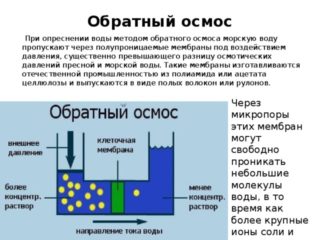 The mineralizer cartridge contains minerals in the form of a bed located inside a plastic or ceramic case. Osmosis water enters this cartridge and is enriched with useful substances. Therefore, a mineralizer is installed right in front of the drinking tap - after the charcoal filter.
The mineralizer cartridge contains minerals in the form of a bed located inside a plastic or ceramic case. Osmosis water enters this cartridge and is enriched with useful substances. Therefore, a mineralizer is installed right in front of the drinking tap - after the charcoal filter.
The cartridge must include:
- magnesium molecules;
- natural calcium carbonate in the form of calcite;
- chlorides;
- carbonate anions;
- sulfides;
- sodium and potassium.
For manufacturers, the composition may vary slightly. More expensive models have a higher quality of mineral filling.
Wiring diagram
The mineralizer is usually installed in the following way:
- Turn off the water in reverse osmosis.
- Connect the plumbing system.
- Install a tap of clean water.
- Put the drain clamp on the sewer.
- Connect the fluid storage tank.
At the final stage, they start the water in the water purification system and check for leaks by opening the tap. Water is drained for 15 minutes to rinse the charcoal filter. Then open the valves of the tank, close the tap with filtered water. Fill the tank for 2 hours and open the drain valve.
Service Features
Filters with minerals must be replaced after every 3-4 thousand liters. This is a period of 6-12 months depending on the number of people in the family. The filter replacement scheme is approximately the same for most manufacturers:
- Turn off the water to the filter.
- Close the valve of the storage tank.
- Turn off the tube, remove the case.
- Install a new cartridge.
- Open the crane on the storage tank and turn on the system.
You can cope with replacing the filter on your own, without involving specialists. Immediately after connecting, check the system for leaks.
Mineralizer selection criteria
Before purchasing a mineralizer for a reverse osmosis system, it is important to determine what kind of purification is required. A simple system consists of 3 cleaning steps: pre-filter, membrane and carbon filter.
In a six-speed system, a mineralizer is already installed in front of the carbon filter in osmosis. Together with osmosis, a seven-step bioceramic activator is installed to restore the natural properties of water. This is the most expensive and high-quality cleaning system.
The size of the system’s storage tank should also be considered - it should fit under the sink. The whole system costs from 7 to 10 thousand rubles. A replacement cartridge costs from 5 to 10 thousand, but in addition to it, you need to change other elements of the cleaning system.
Owner reviews
The opinion of users is divided into 2 fronts:
- opponents believe that the reverse osmosis system with or without a mineralizer does not give the body a natural flow of water, leaches calcium and other trace elements;
- supporters believe that the use of purified water even with or without a simple mineralizer is not able to harm health, because minerals enter the body in other ways.
Specialists and manufacturers agree that it is better to have 2 taps of the cleaning system - in one the water will be mineralized or completely filtered by osmosis, in the second - purified without this system.
